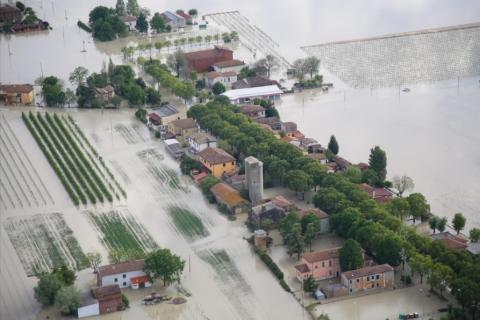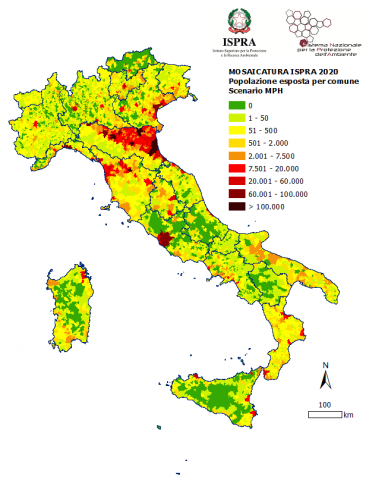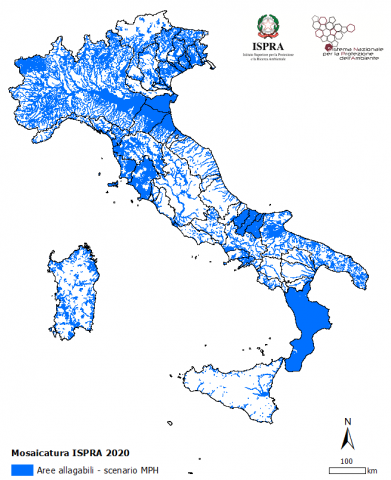FLOOD EVENTS
Data aggiornamento scheda:

In 2023, Italy experienced one of the hottest years in the last 150 years, second only to 2022. The average and maximum temperatures reached new records with October recording temperatures more than 3°C higher than the 1991-2021 average, marking the highest value since 1961. During the summer, intense heatwaves affected the country, with record temperatures of 48.2°C recorded on July 24 in Jerzu and Lotzorai in Sardinia, and 41.2°C in Rome in early August. Drought continued to be a significant problem, with Northern and Central Italy experiencing severe drought conditions in the first four months of the year, which later eased. However, in the last three months of the year, Sicily and parts of Ionian Calabria suffered from extreme drought with a significant precipitation deficit.
Extreme weather events affected several regions, causing severe damage. In May, Emilia-Romagna was devastated by two exceptional rainfall events, leading to flooding, landslides, and 17 fatalities. On November 2, heavy thunderstorms in Tuscany caused flooding and 8 deaths, with exceptional rainfall recorded in the provinces of Pisa, Livorno, Pistoia, and Prato.
In summary, 2023 was characterized by record temperatures, persistent drought, and extreme weather events that had a significant impact on various italian regions.
POPULATION EXPOSED TO FLOODS
Data aggiornamento scheda:

This indicator provides an overview of the population residing in flood-prone areas (population exposed to flood risk) at the national, regional, provincial, and municipal levels. In Italy, the population residing in areas with high hazard/probability is 4.1% of the total national population (2,431,847 people); those exposed to medium hazard/probability are 11.5% (6,818,375 people), while the population in areas with low hazard/probability is 20.6% (12,257,427 people).
FLOOD HAZARD AREAS
Data aggiornamento scheda:

The indicator provides information on the flood hazard conditions for the entire national territory, updated to 2020. Areas with high hydraulic hazard, prone to flooding with a return period between 20 and 50 years, account for 5.4% of the national territory (16,224 km²). Areas with medium hydraulic hazard, prone to flooding with a return period between 100 and 200 years, represent 10% (30,196 km²). Areas with low hydraulic hazard, prone to flooding during rare or extreme events, make up 14% of the national territory (42,376 km²).